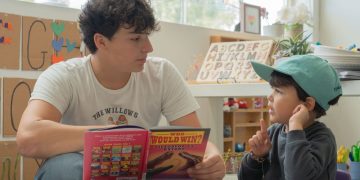The number of homeless people in Los Angeles County
increased 5.7 percent over the past year to reach 46,874, according to results of the 2016 Greater Los Angeles Homeless Count released today.
The figure is up from 44,359 in 2015, according to the Los Angeles
Homeless Services Authority. The vast majority of the county’s homeless —
34,527 people — are unsheltered, up from 31,025 in 2015.
Despite the overall increase, homelessness among veterans dropped by 30
percent across the county, from 4,362 in 2015 to 3,071 this year. In the city
of Los Angeles, the number of homeless veterans fell to 1,617, down from 2,733
last year. Family homelessness throughout the county fell by 18 percent over
the past year.
The decrease in the homeless veteran and family population “reinforces
the importance of resources and (a) collaborative system to deliver them,”
said LAHSA Executive Director Peter Lynn.
“Homelessness responds to resources,” he said. “When we have
systemically applied city, county and federal resources, we see results.”
strategic investment through coordinated systems.”
The city of Los Angeles overall saw an 11 percent jump in the number
homeless people, to 28,464, representing 65 percent of the county total,
according to the count. Of the city’s homeless, 21,338 are unsheltered. The San
Fernando Valley saw a 35.2 percent increase, while the San Gabriel Valley had a
15.7 percent decrease.
Los Angeles Mayor Eric Garcetti said he has proposed $138 million in the
city’s budget for the coming year to affordable housing and homeless
services, and noted that the city housed more people last year than any other
city in the country.
“Despite our progress, Los Angeles is facing a historic housing
shortage, a staggering mental health crisis and veterans are becoming homeless
every day,” Garcetti said. “As a city, we have launched efforts to tackle
these issues, securing record federal investments in supportive services for
veteran families, producing a comprehensive homelessness strategy report and
expanding a robust winter shelter program. This year, we are doubling down on
our work.”
While county and city officials pointed to the success of targeted
efforts on homeless veterans and families, others said the count’s results also
show that solutions will likely not come soon enough.
Legal Aid Foundation of Los Angeles staff attorney Shayla Myers said
recent plans adopted by the city and county to tackle homelessness won’t
address the challenges faced by the homeless counted in LAHSA’s survey.
“Everyone agrees the City Council plan and the county plan — these are
long-term,” Myers said. But the latest count, as in past years, shows “that
there are thousands of people who are homeless and on the streets of Los
Angeles every night. They are compelled to live on the street every night.”
Myers and other attorneys recently secured a court injunction that
prevents Los Angeles police and sanitation officers from seizing and destroying
homeless people’s property without sufficient notice, and requires that the
city segregate and store impounded belongings where they can be recovered.
She said the city has not come up with immediate solutions that prevent
homeless individuals from being criminalized, but instead plans to implement
56.11, an ordinance that would allow the city to cite homeless encampments set
up during the day.
“Where are individuals who are on the street — where are they
supposed to go?” Myers said. “That’s what those numbers say to me.”
Councilman Jose Huizar, whose district includes Skid Row, said the new
numbers are a reminder that homelessness is a persistent problem.
“This year’s budget is a good start at funding our homeless strategy
report priorities, and I am hopeful that there will be a measure on this
November’s ballot to raise an ongoing source of new revenue to finally address
this issue like the urgent humanitarian crisis that it is,” Huizar said.
Huizar’s district had a homeless population of 5,590, which is down 11
percent from last year.
Councilman Mike Bonin, who represents the Venice area, said the
“results are both disturbing and unsurprising.”
The results, which shows Bonin’s district has 2,529 homeless people,
were predictable because many of the strategies for tackling homelessness being
discussed by the council haven’t “kicked in yet.” But the results also show
“rapid rehousing” strategies — offering financial assistance for housing and
other services to veterans and families who are homeless — have yielded
results, he said.
“The significant drop in family and veteran homelessness is telling and
underscores the type of strategic decisions we made and the investments we’re
making are the right ones,” Bonin said.
He said he hopes the results put “fuel into the fire” on pending city
measures aimed at increasing housing for the homeless, “because we cannot get
affordable or homeless housing built quickly enough.”Measures to tackle homelessness are being discussed by the City Council
and include a linkage fee on development projects to raise money for affordable
housing, policies to allow the construction of micro units and the fast-
tracking of affordable housing projects.
The results also showed large homeless populations in parts of the San
Fernando Valley.
Councilman Paul Krekorian — who represents North Hollywood, Valley
Village and Studio City — said homelessness is “a significant and growing
issue” in the valley.
“The numbers underscore that the valley absolutely must get its fair
share of funding for region-specific services to tackle this problem,” he
said. “I’m going to keep fighting for our neighborhoods and working to get
people off the streets and into jobs and affordable housing.”
The latest count put the number of homeless people in Krekorian’s
district at 1,084, which is a 79 percent spike from the previous year’s count
that found 607 people.
The latest figure, however, is in line with past years, with the 2013
homeless population in Krekorian’s district at 1,024 people.
Krekorian said he worked with LAHSA in the latest count to ensure it was
“the most accurate count possible in the East Valley.”
“We went with volunteers to every area of the district that we know
homelessness to be an issue, which gave us a real way to assess the impact on
the area,” he said. “What we found was a significant increase over last year
across the valley.”
Krekorian aide Ian Thompson said the councilman’s office pointed LAHSA
volunteers to places like the Los Angeles River, the Tujunga Wash, near
railroad tracks and North Hollywood Park — places where there are often
homeless people living in encampments or out of RVs.
The Sixth Council District, which includes Van Nuys, Arleta and Sun
Valley, had the largest San Fernando Valley homeless population this year with
1,856 people.
South Los Angeles also had high numbers of homeless individuals, with
3,458 people in the Ninth Council District.

























